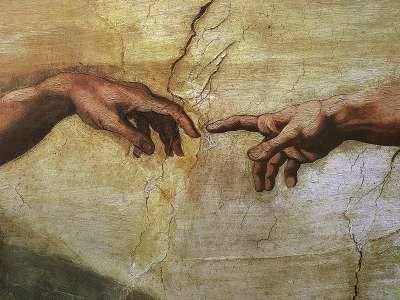How do you respond when the pressure is on? Where do you go for comfort and help? Do you reach for the chocolates or crack open a bottle? Or do you hit out at whatever unlucky individual is nearest? When stress hits, do you go for fight or flight? Are you fists up or head down? Are you rhino or hedgehog?
What did Jesus do at the worst of times? He didn’t blame, he didn’t run, he didn’t hit out, he didn’t hide. He prayed.
Luke says, “Being in anguish, he prayed more earnestly” (Luke 22:44)
In the toughest week of his life, we see Jesus praying the longest prayers. And they weren’t navel-gazing, self-preservation prayers. They were prayers of surrender and they were prayers for us.
If you have some time in the week leading up to Easter, look at what Jesus prayed in that week of his life in John 17 because in it we have a glimpse of what God most wants for us,
“I want those you have given me to be where I am and to see my glory”.
Jesus is facing the lonely scary prospect of the Cross and how does he respond? He prays for us. He pours out his longing that we would be with him. All the blame for the Cross should be on us and Jesus is saying, Father, I want these ones who will cause such pain to be with me forever. Oh, how he loves us. If we realised how much Jesus wants us near, we would run to him today.
As I write this, I am in Wales with my boys and I can feel my happiness steadily climbing like a thermometer in the sunshine. I love it when they are with me. Yet it astonishes me that God feels the same about us. God loves to have us with him.
That’s the prayer at the crux of the Cross – God’s desire to have us with him.
A few weeks ago, I visited Rome and of course had to join the 25,000 others cramming our way into the Sistine chapel. As we walked out, my son commented on the fact that there was no joy to be seen on the painted figures that decorate the chapel. Every face was frightened or severe. It is an extraordinary visual feast but spiritually it is bereft of the gospel. The image that imprinted itself on my mind was the gap left between man and God. In Michelangelo’s world, God is ultimately untouchable.

The gospel declares that Jesus came to bridge the gap so that we can bridge it too.. He prayed so that we can pray.
Isaiah opens up the deepest mystery of all, that the cross is itself intercession,
“For he bore the sin of many,
and made intercession for the transgressors.” (Isaiah 53:12)
As Jesus hangs on the Cross, he is offering himself as a prayer, appealing to the heart of the father that our sins might be forgiven so that we might come home to be with him. The joy is that this prayer is perfectly tuned to the will of the father so the answer is a yes that rings through our eternity.
As he makes intercession by pouring out his life, he articulates it with his first words from the Cross,
“Father forgive them…”
This is is much more than his loving prayer for those around him – this is ultimately the prayer of his whole life on earth. He is born and dies that we might be forgiven, that we might be with him.
As you meditate on the Cross this Easter, consider Christ praying for you, pouring out his life to make intercession for you – that you might be forgiven, that you might be with him – and allow him to draw you near.
And next time stress hits, remember that you can pray because he did.

